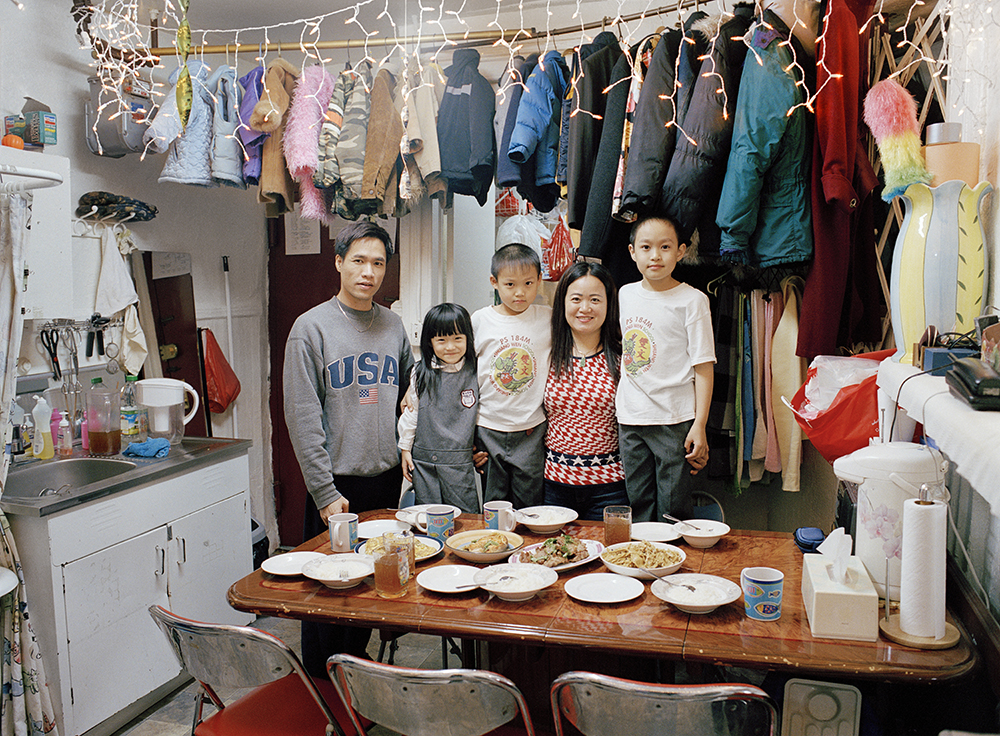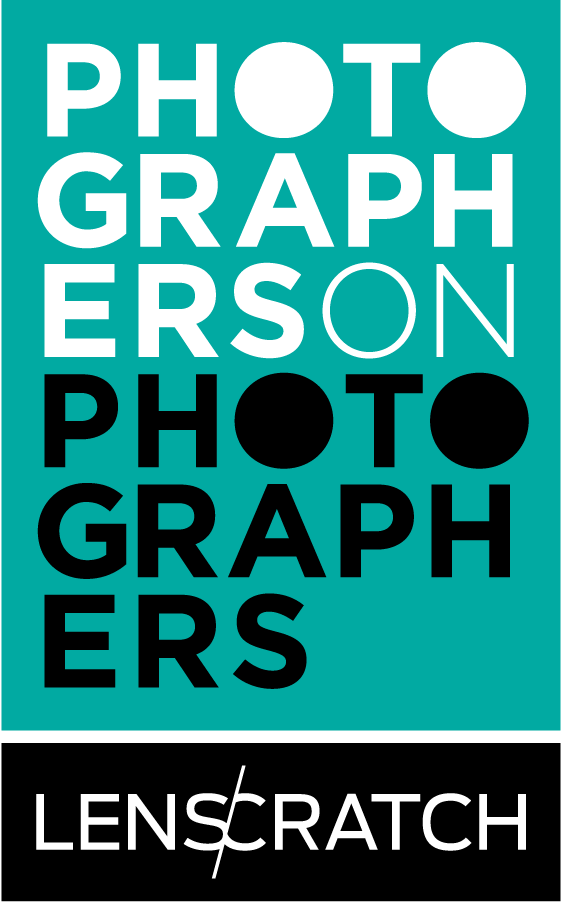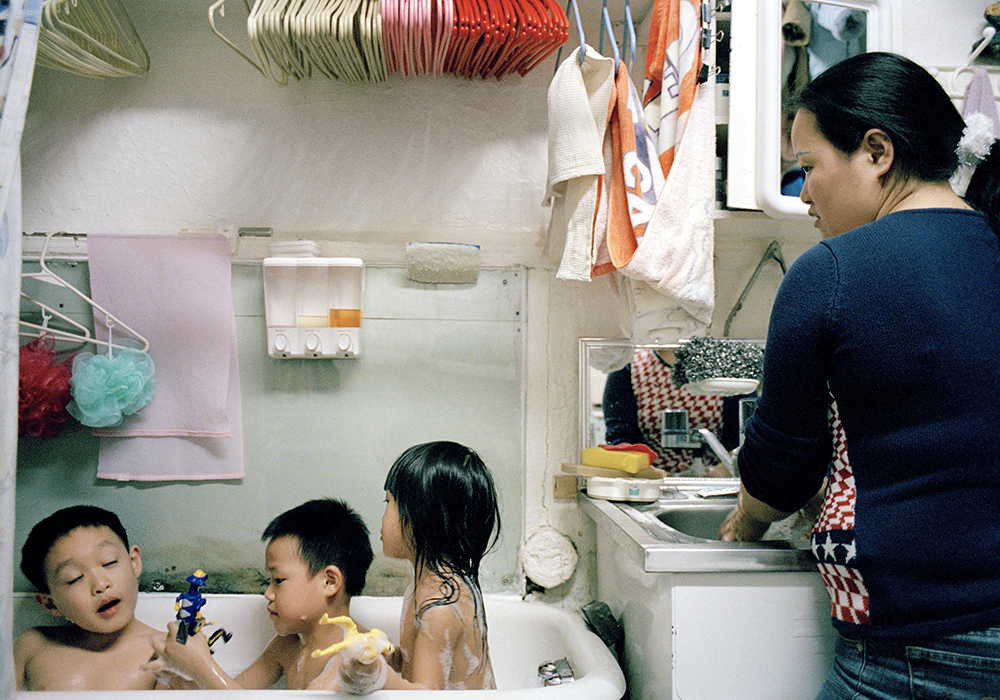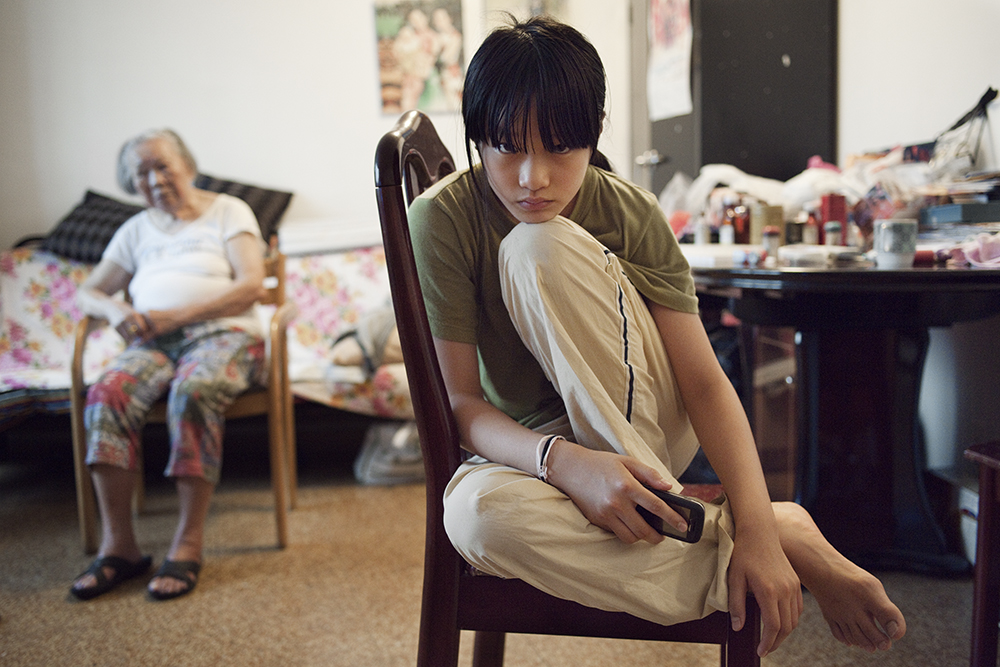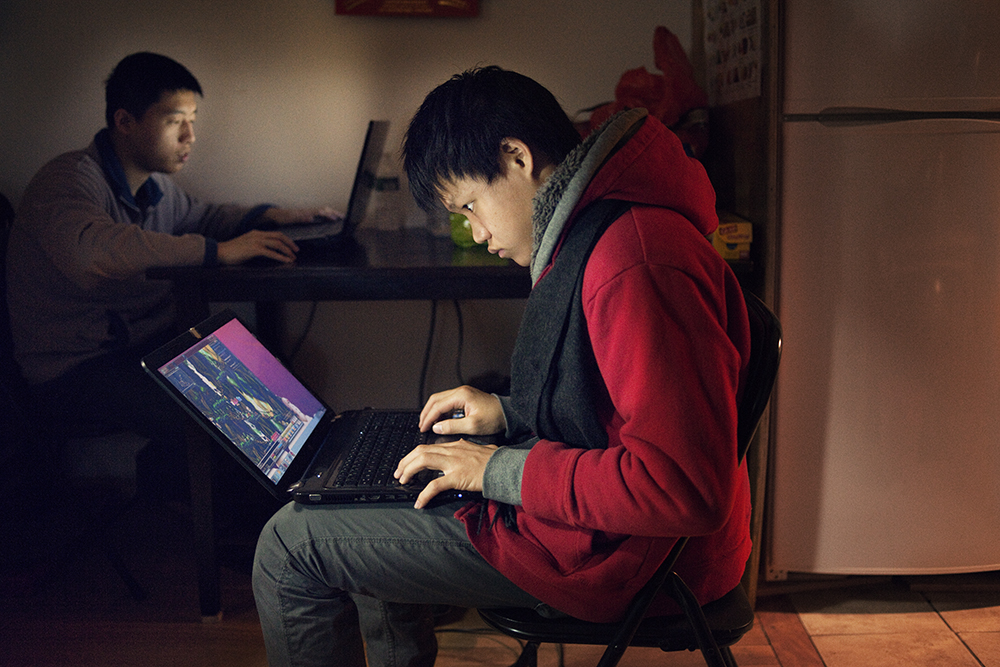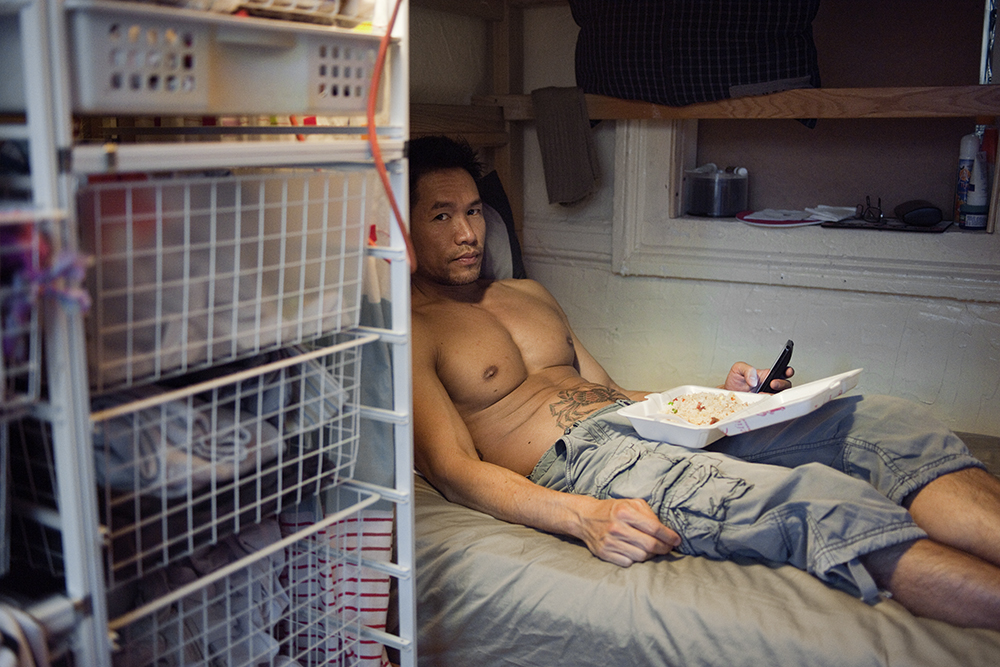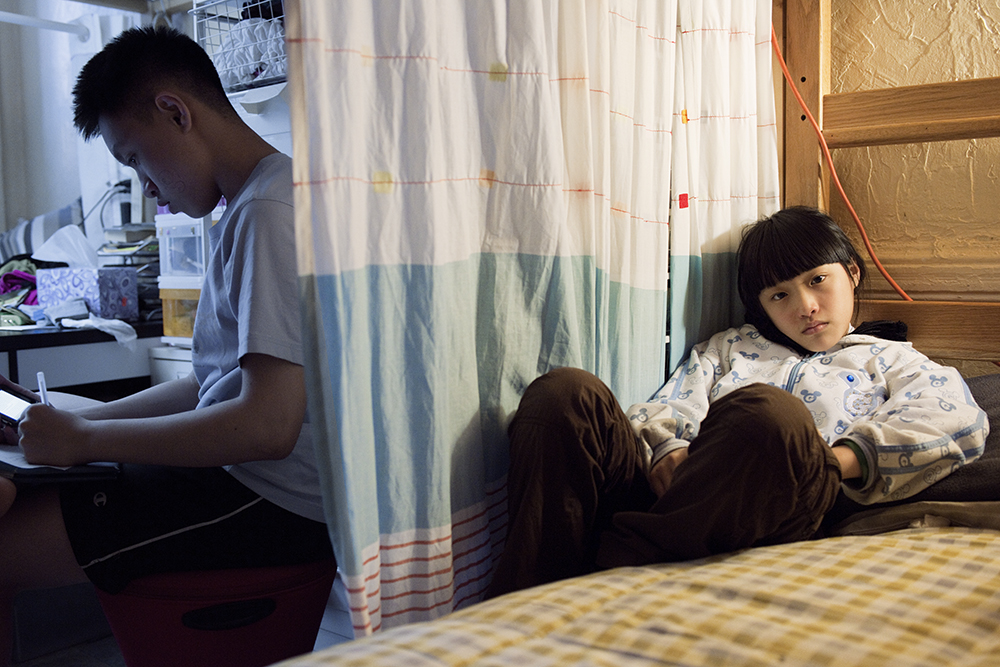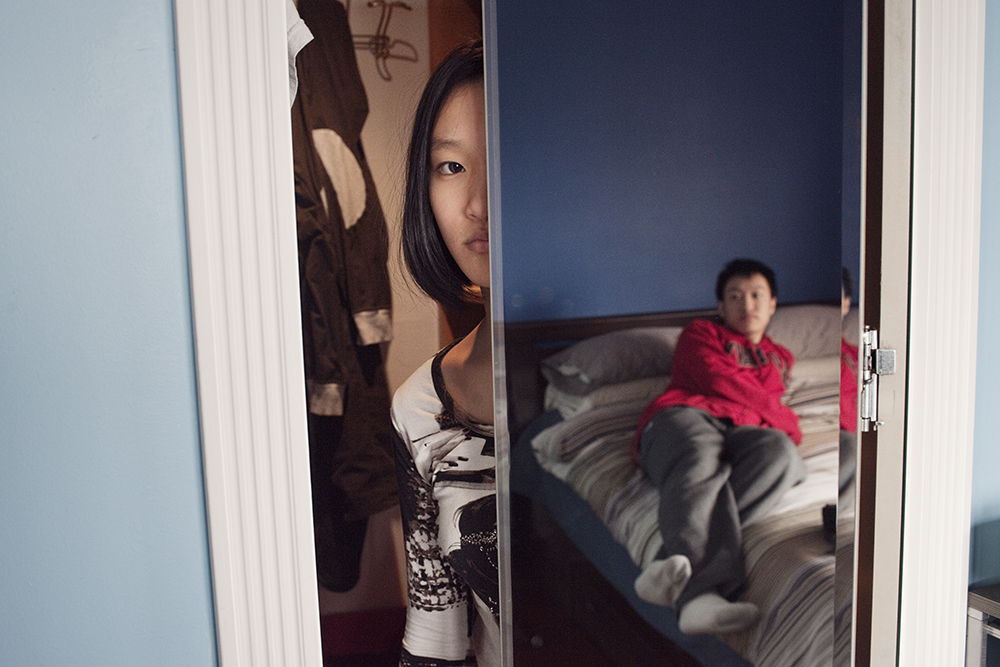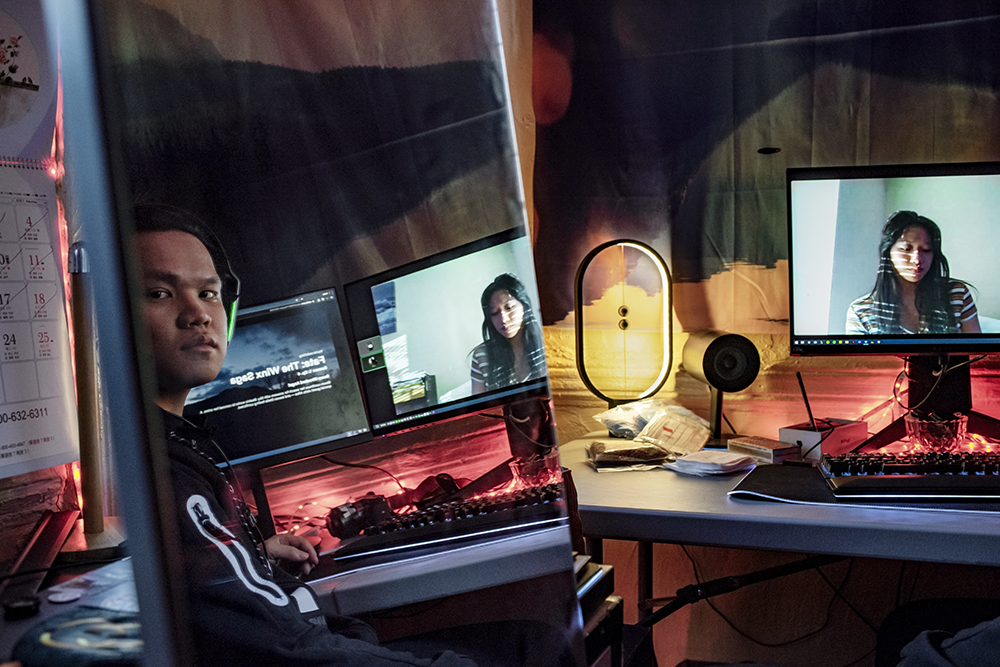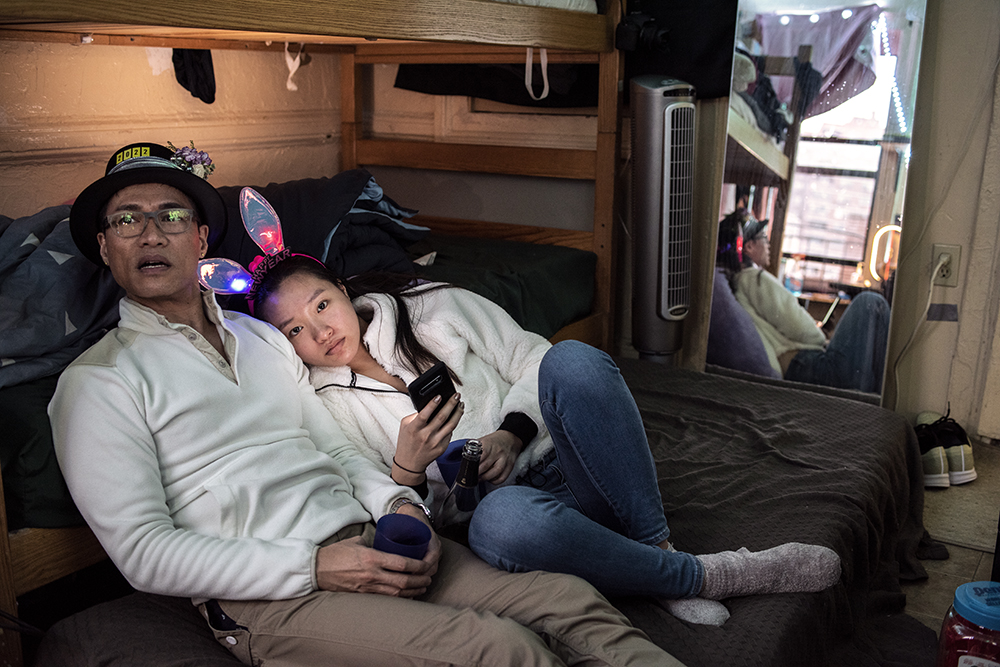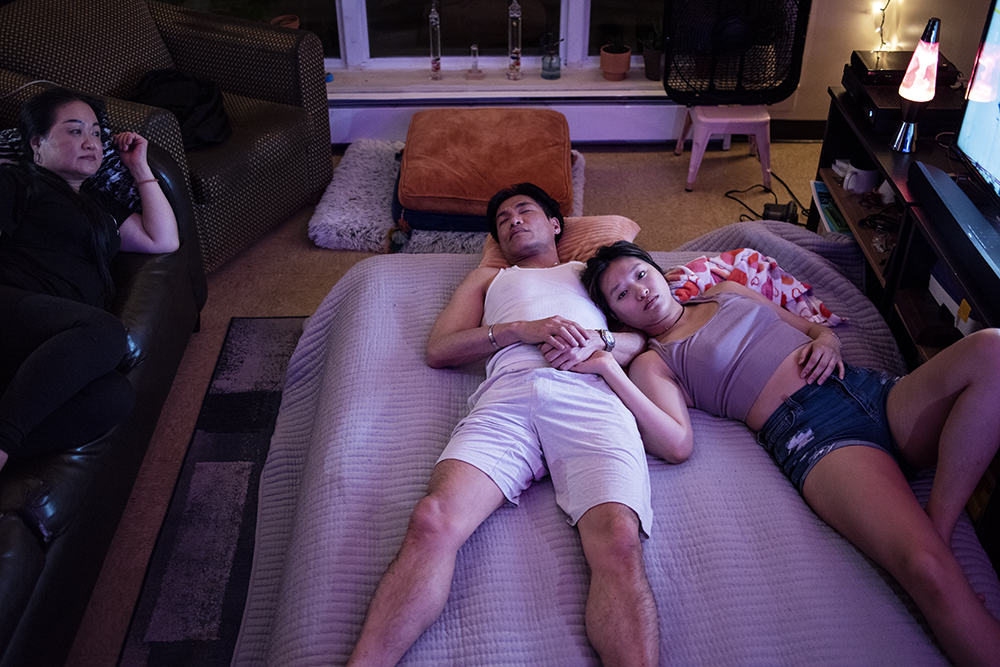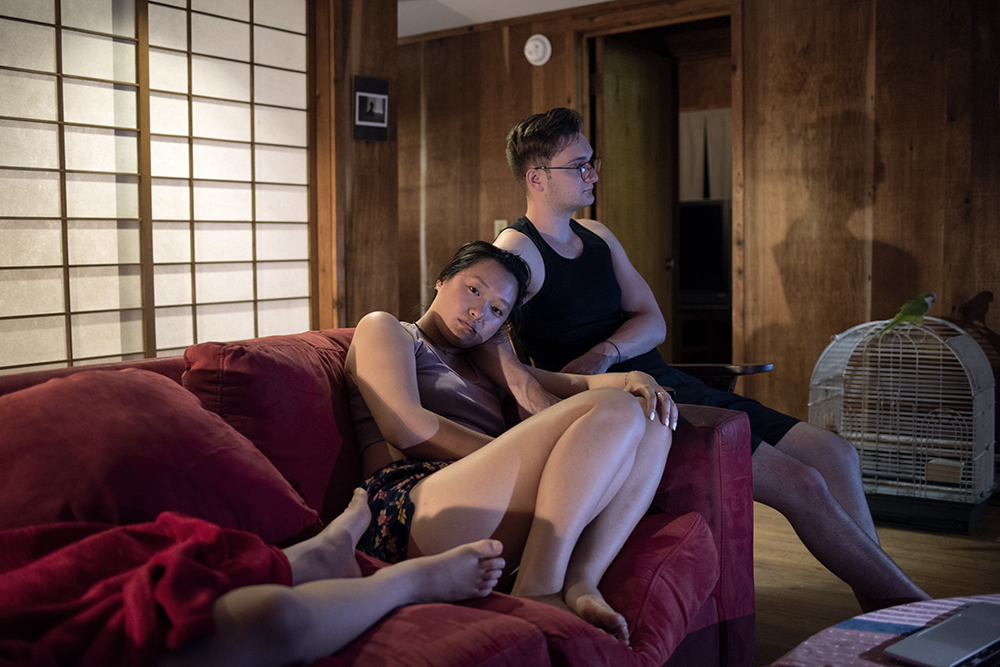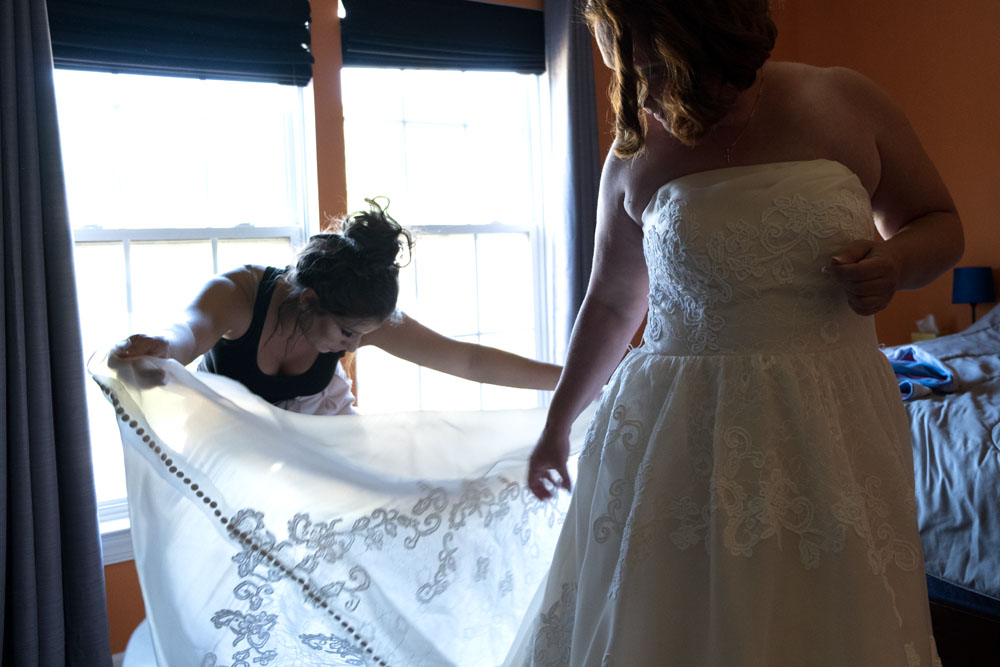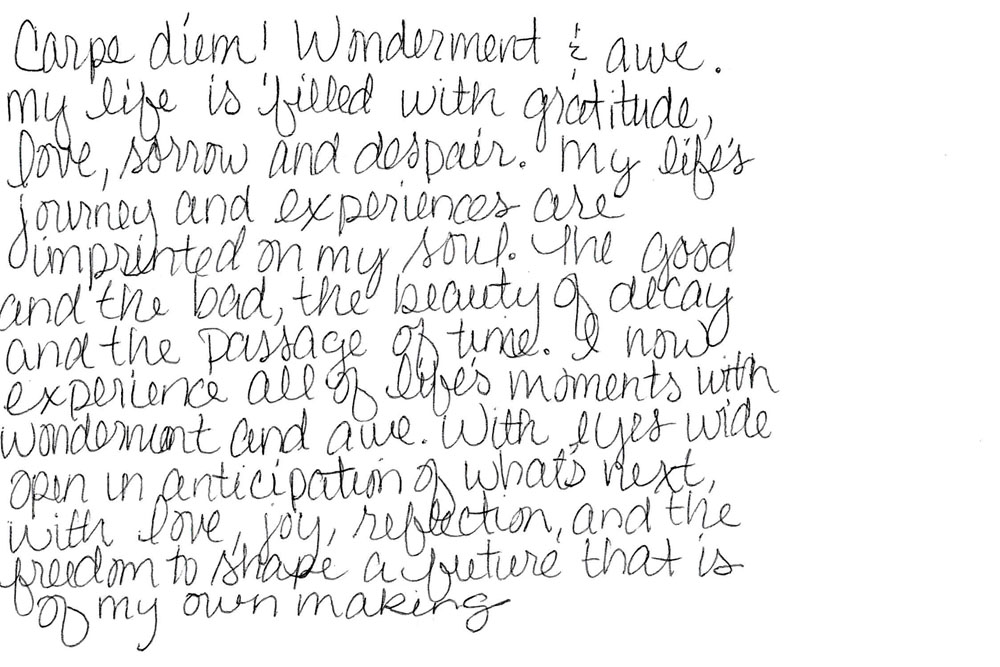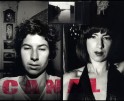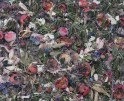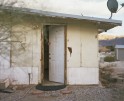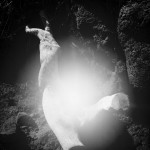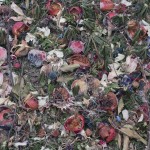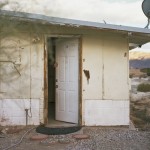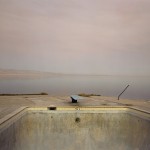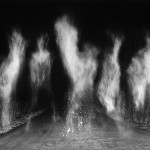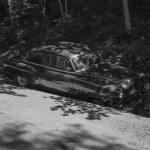Photographers on Photographers: Sara Bennett in Conversation with Thomas Holton
In 2014, I began photographing four women who were returning to New York City after spending anywhere from 17 to 35 years in prison. As a former journalist and criminal defense attorney, I thought a lot about the ethics of getting so close to the women I was documenting. In 2016, I discovered Thomas Holton’s “The Lams of Ludlow Street,” when it was featured in the New York Times Lensblog. At that point, Tom had already been documenting the Lam family for 13 years and his project had become personal. He had established very close relationships with the Lams, even visiting their relatives in China and Hong Kong.
Knowing of Tom’s relationship with the Lams was incredibly inspiring and freeing to me. I stopped worrying about getting too close to my portrait subjects.
A few years later, I was thrilled when I found out that my work was hanging right next to his in the “Home” category at Photoville’s 7th Edition of the Fence. I brought his book to the opening, and, fan that I was, asked him to sign it for me. Since then, we have attended each other’s exhibitions and I have been a guest lecturer in his class.
I still love Tom’s work as much as ever. The depth of his relationships, his sense of composition, his eye for light are incredible. Whenever I go out shooting in small spaces, I pull his book off my shelf and try to figure out how he does what he does so well.
You’ve been photographing the Lam family for almost 20 years now. Was that your intention when you started out?
When I met the Lams in 2003, I didn’t think I’d be photographing them for 19 years. I was just happy to be invited into their home space.
At the time, I was a student in SVA’s Master’s Degree program in photography and I was always wandering the streets of Chinatown, but I felt what I was shooting was kind of superficial—the fish guy, the crab guy. I started to think about how to meet families or individuals, how to get behind closed doors. It takes trust and comfortability and it’s not the easiest thing to get invited in. If it weren’t for Charles Traub at SVA, I would have given up and sat on the couch. I ended up meeting a housing advocate who introduced me to the Lams.
How did you form a relationship with the Lams?
I just was around them so much that I became part of the family. I would pick the kids up from school, be there at meal time, I invited them to my wedding. It just became a regular thing for me to be there, totally normal.
There was a sweet spot over a decade or so when the parents and kids were on Ludlow Street. Now the parents are divorced and only one of the kids still lives there But I try to see them, or some of them, every few weeks. Right now, I haven’t seen anyone in 2-1/2 weeks, which is a long time.
And it’s evolved. When Cindy [the youngest who is now a college graduate] was home this summer, she stayed in my apartment for a few days. Right now, I’m on Long Island so Cindy and her boyfriend came out here for a few days. They crash at my place. It’s at the point where I have a Lam in my basement for 3 or 4 days. They’ve evolved into family—like a niece coming over.
Because you’re so close to them, are there photos that you wouldn’t show?
They see every photo that I choose to edit and finalize. Everything’s a maybe. They’ve never said they hated a photograph but if they did I wouldn’t use it.
Do you consider yourself a documentary photographer?
I don’t consider myself a documentary photographer in the vein of Donna Ferrato or Barbara Anne Keneally. That is amazing documentary work. I’m somewhere between portraiture and story telling.
Of course, I’m very conscious of what’s happening in their lives at any given time, so if I get a photograph I like, I try to title the picture to reflect what’s going on. Around 2010, when the parents were in the process of breaking up, I photographed the changes in the apartment. The bed used to be 3 mattresses put together, and then they built a bunk bed/loft sleeping system with curtains and a search for privacy, I saw that as physical tension, physical separation, kids finding more space, and a heavier tone. I have Steven {the father] eating by himself because they’re breaking up so he’s getting to-go food or eating leftovers, implying he’s by himself. The big family meals of several years earlier were happening elsewhere. It’s subtle.
Is it difficult to continue the story?
I sometimes get a little stuck—I have a million photos of Cindy staring at her phone because that’s what 20 year olds do. On December 31, I went to their house and I bought a bottle of champagne to celebrate New Years. The father was there, the mother was working. I broke open the champagne and Cindy was leaning against her father drinking champagne. I asked her to look at me and I took a picture. It’s a selective process.
I don’t always photograph when I go visit them. I love them as family. It’s not a project that has to be completed any time soon.
I teach photography. I always tell me students: if you find something that you love doing, the narrative or the tone or the space, the fact that you didn’t make a good photograph shouldn’t stop you from going back. Because you’ll make a lot of bad photographs. You have to be in love with what you’re doing because you’ll have many many days you don’t make a photograph you like.
Do you photograph your family?
I photograph my son a lot, but he’s getting to the age where he doesn’t want me to.
Did the Lams ever not want you to photograph them?
If Cindy didn’t want to be photographed, I’d respect that but I’d be devastated. I’m drawn to her as the youngest. The camera loves her and she loves the camera. My focus has been on her because for many years she would be the one who was most responsive to me.
Do you photograph anything else besides the Lams? Do you carry a camera with you?
I photograph the Chinatown Surfaces project as a way to break up my visual palette. I need to photograph and create. I always have a little Fuji that I carry around. I’m always looking for potential photographs. The camera is very much nearby. So my eyes are alert, but I don’t carry it to the market or a lot of the time. I probably should.
I am always struck by how beautifully your shots are lit. How do you do that. I know you’re shooting in teeny spaces, so I imagine you’re not carrying much equipment.
I have a Nikon DSLR. I shoot with a 35 mm because I like the left to right range. I’ll turn lights on and off. I’ll move a lamp a bit. But I’m not dragging a lighting kit.
I’m very aware of lighting. I’ll notice cool shadows. I sometimes use the light on my phone for a kick. It might open up a shadow or create a highlight. It has to be pretty spontaneous. I use computer screens. I ask them to put their phones on the brightest setting so I can open up a shadow. I learned a lot when I was a photo assistant for 10 years—open or close a window shade, place a lightbulb in a corner. We used to call it available dark. Ha!
What photographers inspire you?
When I was first starting in grad school , it was Larry Sultan’s Pictures from Home. He photographed his parents at their home in L.A, just beautifully lit, subtle expressions and quiet moments of his parents puttering around at home. It taught me you don’t have to sensationalize.
These days it’s Anna Grevinitis who photographs recreations of domestic scenes of her life with her daughter who has Down Syndrome. I show her work to my students all the time. Nobody but Anna can make that work which makes it that much more special and uniquely hers. This is the type of work which stands out and remains timeless. Do you know her?
Yes! Anna and I are teaching a photo class to women who live in permanent supportive housing and we became friends this year. I, too, love her and her work.
Thank you so much for your time and congratulations on your work being in the upcoming exhibition at the Smithsonian National Portrait Gallery.
Thomas Holton is a photographer and educator based in New York City. He received a BA in Anthropology from Kenyon College and his MFA in photography from the School of Visual Arts. His ongoing project, The Lams of Ludlow Street, has documented the life of a single Chinese-American family living in Manhattan’s Chinatown over the last 20 years. The project was published as a book in 2016 by Kehrer Verlag and has been shown in the United States and abroad at venues including The Museum of the City of New York, the New York Public Library, and the China-Lishui International Photography Festival. The Lams of Ludlow Street will be featured in an exhibition at the National Portrait Gallery in Washington, D.C. October 28, 2022 – January 7, 2024. The work has also been published by the New York Times, Aperture, The Guardian and many others periodicals. Holton has taught at the International Center of Photography and was co-founder of the VisuaLife photography program, working with at-risk teenagers in collaboration with the Children’s Aid Society in New York City. Kehrer Verlag published “The Lams of Ludlow Street” in 2016. He is currently the photography instructor at the Trinity School in New York City.
Follow Thomas Holton on Instagram: @thomas_holton_photography

©Sara Bennett, MONICA, 42, in the college office at Bedford Hills Correctional Facility (2018). Sentence: 50 years to life, Incarcerated at the age of 20 in 1996. (From the series: Looking Inside: Portraits of Women Serving Life Sentences)
After 18 years as a public defender, Sara Bennett turned her attention to photographing women with life sentences, both inside and outside prison. Her work has been widely exhibited in solo shows, including at the Blue Sky Gallery in Portland, OR, and in group shows, including MoMA PS1’s Marking Time: Art in the Age of Mass Incarceration. Her work has been featured in such publications as The New York Times, The New Yorker Photo Booth, and Variety & Rolling Stone’s American (In)Justice.
Follow Sara Bennett on Istagram: @sarabennettbrooklyn
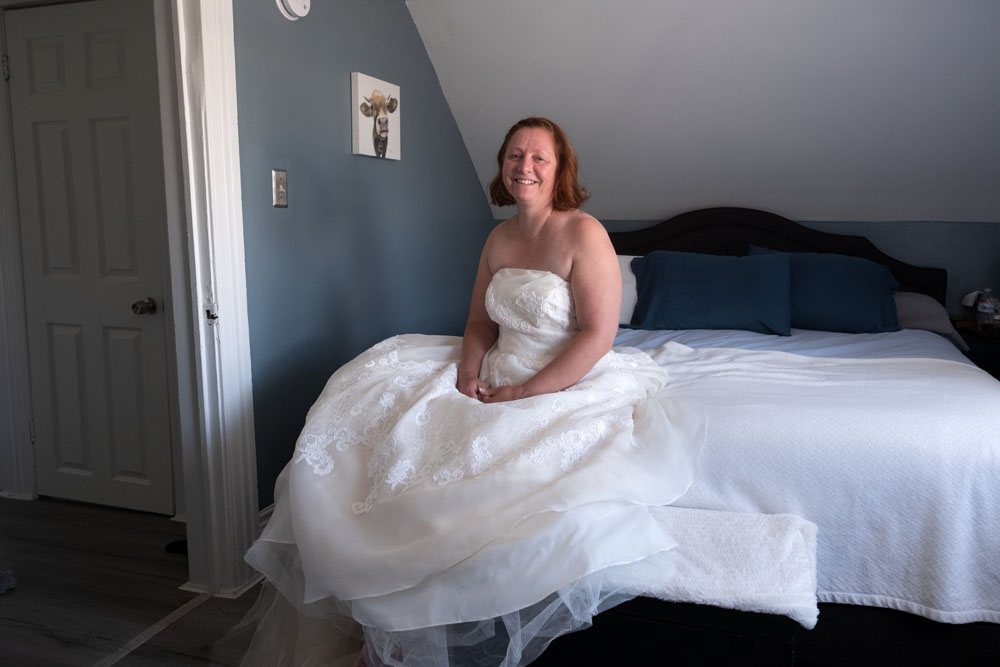
©Sara Bennett, MONICA, 46, at home, 2-1/2 years after her release. Rochester, NY (2022). Sentence: 50 years to life. Served: 23 years. Granted clemency by Governor Andrew Cuomo. (From the series: Life After Life in Prison: The Bedroom Project)
Posts on Lenscratch may not be reproduced without the permission of the Lenscratch staff and the photographer.
Recommended
-
Photographers on Photographers: Mehrdad Mirzaie in Conversation with Liz CohenSeptember 4th, 2025
-
Photographers on Photographers: Elizabeth Hopkins in Conversation with Nicholas MuellnerAugust 21st, 2025
-
Photographers on Photographers: Cléo Sương Mai Richez in Conversation with Shala MillerAugust 20th, 2025
-
Photographers on Photographers: Emma Ressel in Conversation with Tanya MarcuseAugust 19th, 2025
-
Photographers on Photographers: Ariana Gomez in Conversation with Tracy L. ChandlerAugust 18th, 2025

